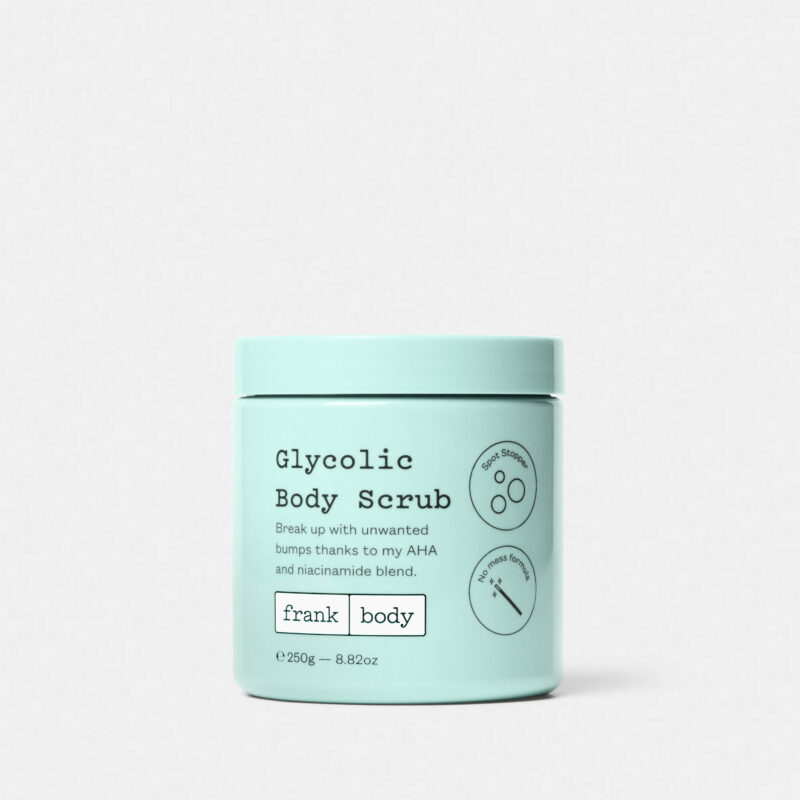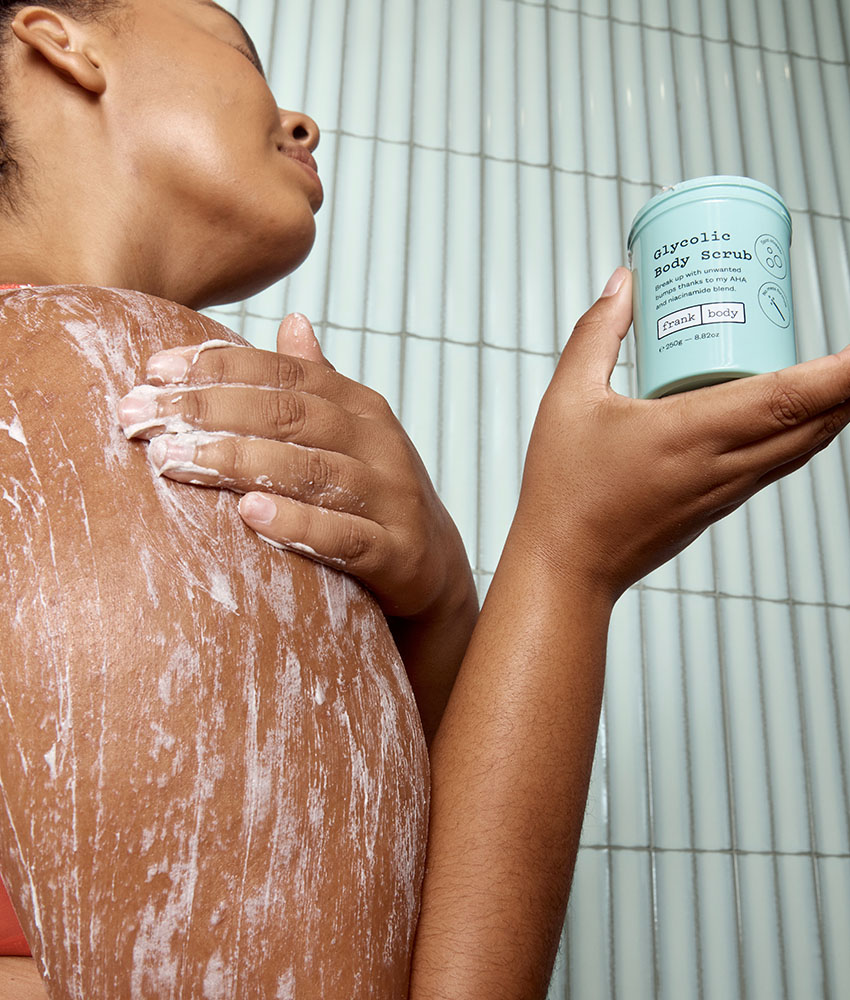What starts with G, has one big O, and helps with hyperpigmentation? Glycolic acid.
What even is hyperpigmentation and melasma?
Hyperpigmentation is a patch of skin that’s darker than the surrounding skin.
This can look like brown, black, grey, red or pink spots or patches on your body. Sometimes also called age spots, sun spots or liver spots, hyperpigmentation is caused by an increase in melanin production in that area. It’s also super common to be found in your pits.
Melasma most often pops up on your face but can sometimes affect your arms, neck, and back. It’s quite common in pregnancy across both cheeks, and coined the ‘mask of pregnancy’.
What causes it?
Hyperpigmentation is a broad term that can refer to any discolouration, scarring, or inflammation. But its most common cause? The sun. Freckles and sun spots are types of hyperpigmentation caused by UV rays. That’s why you need body sunscreen, every day. Seriously, babe.
You can also experience post-inflammatory hyperpigmentation (PIHP) after a chemical peel or laser treatment. This happens because your melanin-producing cells are triggered and release excessive pigment.
Melasma is caused by UV exposure and hormonal changes, like during pregnancy. The excess estrogen and progesterone cause excess melanin production.
Can glycolic acid lighten your skin?
No, babe. Glycolic acid is not a skin lightening (whitening) agent.
How does glycolic acid help?
Oh, glycolic. It does so many things, and going hard on hyperpigmentation is one of them.
Because hyperpigmentation is darkest on the surface of your skin, removing those top dead skin cells fades the excess pigment. Glycolic acid is an excellent chemical exfoliant that gobbles up that top layer.
Scrubbing with glycolic acid reveals a fresh layer of skin underneath and evens out your skin tone. Using it consistently a few times a week will effectively fade hyperpigmentation and melasma.
Hit the spot with glycolic. Literally.


